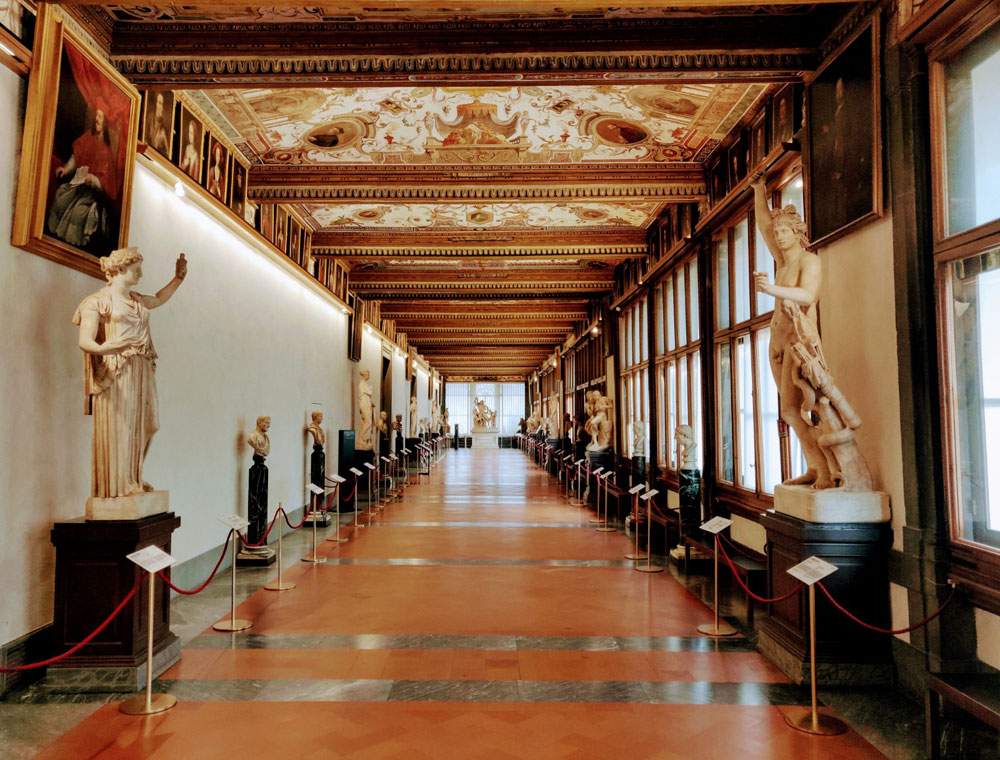Museums closed, CISL: "to reopen them we will have to wait for contagions to drop, and plan"
Our conversation with cultural heritage public administration unions on the topic of museum closures continues. Today we talk with Valentina Di Stefano and Giuseppe Nolè, national coordinators of CISL Funzione Pubblica Ministero della Cultura.
 |
| The Uffizi Gallery. |
On museum closures, it has been said that the decision was made to limit opportunities for contagion, but there are studies that say that in observance of measures to contain contagion, they are the safest places ever, and after all, the experience of Spain (where several museums have never closed) teaches that the opening of cultural venues could easily coexist with the containment of Covid-19. What is your position on the issue of indiscriminate museum closures?
The museum closures were a painful but precautionary measure by the government to limit opportunities for contagion as much as possible. At a time when there are still hundreds of deaths a day, we need to keep our guard up and try to protect workers and the public. While it is true that risks can be limited in museums by contingenting access, it is also true that sanitizing spaces with very delicate works involves enormous difficulties and costs.
Why do you think there has not been at least a difference between large and small museums? There are large and highly toured museums in the historic centers of large cities (such as the Uffizi, the Egyptian Museum in Turin, or the civic museums in Venice, for example), but there are also small museums in the provinces, easily reached by the public and workers, and already little visited in themselves.
There are no big and small museums. Museums are territorial garrisons of culture and democracy, and that is why they are all valuable and important. Work could begin on the reopening of archaeological areas and historic gardens that are spread over wide open spaces. For museum reopenings we will have to wait for the contagions to subside and schedule them in relation to the color changes of the various regions, a measure the latter of which found favor with us when it was introduced.
For large cities, it has been said that the problem is mainly in transportation and especially affects workers. Have you ever asked the ministry or the entities that run the museums to have employees reimbursed for travel by their own means in order to avoid having them take public transportation?
With the ministry we are trying to work on welfare for our workers, but it is not easy because until before the pandemic, resources were always reduced. So many colleagues reside far from their workplaces and for many it would be difficult to use their own means. That is why we felt it was a priority to ask for the vaccination of MiC workers who work in the offices and places of culture that are in contact with the public and have been reopened because they provide essential services and are responding to specific needs, such as colleagues in archives and libraries.
Have any public employees asked your union to open museums? If so, what percentage?
We are not able to estimate a percentage. Certainly many colleagues are displeased and saddened by this prolonged closure and have expressed this to us in various ways. It must also be said that in our museums, activities during these months never stopped. The staff has continued to provide supervision, and the opportunity has been taken to revise museum itineraries, carry out restoration, maintenance and conservation work on the collections; in addition, there has been a great impetus for digitization activities and digital communication (one case is emblematic is the beautiful work done by colleagues at the Archaeological Museum of Venice or the Uffizi Gallery).
What do you think needs to be done to safely open a museum?
In the first 15 days of May 2020, labor organizations and the Ministry worked hard to draw up a protocol for the reopening of museums, archives and libraries that took place gradually then from May 18, 2020. That protocol is, in our opinion, an excellent starting point. The continuous discussion between employers and unions at the level of each individual institution then allowed for continuous updates and improvements of the same. For us, the implementation of that protocol is a guarantee of safety for visitors and workers. Beyond that we believe that incentivizing the reservation system, as libraries and archives are doing, could be a useful system for better flow management.
Have you lobbied or are you lobbying the Ministry of Culture to ask that everything be reopened as soon as possible, logically safely and in accordance with current protocols?
We are convinced that one of the priorities for reopening the museums as soon as possible, in addition to complying with safety protocols, is also to secure the workers who are in contact with dozens of people every day. We have repeatedly asked that workers in museums and all cultural venues, essential services under Law 146/1990, be included in the vaccination plan along with all other categories of public services. For now, however, our request is stuck at the Ministry of Health.
 |
| Museums closed, CISL: "to reopen them we will have to wait for contagions to drop, and plan" |
Warning: the translation into English of the original Italian article was created using automatic tools. We undertake to review all articles, but we do not guarantee the total absence of inaccuracies in the translation due to the program. You can find the original by clicking on the ITA button. If you find any mistake,please contact us.



























